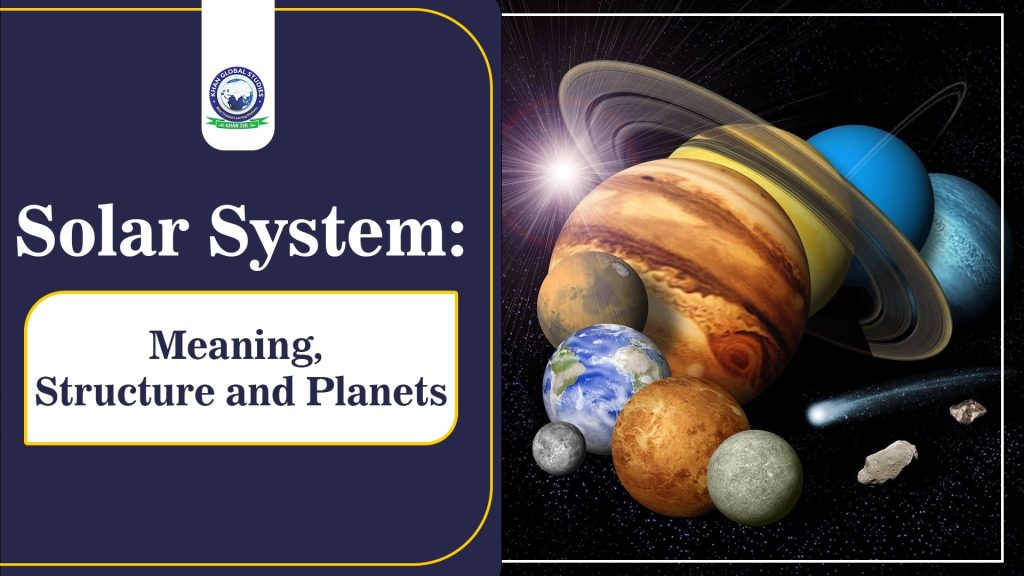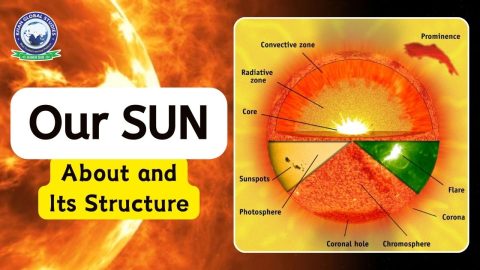
Our solar system, a captivating and vast celestial neighbourhood, holds endless wonder and intrigue. This article explores the planets, moons, and phenomena that make up this celestial family, at the heart of our cosmic environment, from the bright star at its center to the mysterious outskirts.
The Sun: Our Local Star
At the centre of our solar system is the Sun, a glowing ball of incandescent gas. Its energy production, primarily through nuclear fusion, powers our entire system. The Sun’s core is a fiery furnace, where hydrogen atoms fuse into helium, releasing enormous amounts of energy. This energy provides light and heat to our planets and keeps them in orbit.
Structure and Composition
The Sun consists primarily of hydrogen (about 74%) and helium (about 24%), along with small amounts of heavier elements. Its layered structure includes the core, radiation zone, convection zone, photosphere, chromosphere and the outermost layer, the corona.
Energy Production
Nuclear fusion occurs at the centre of the Sun, where extreme pressure and temperature allow hydrogen atoms to fuse into helium, releasing enormous amounts of energy. This energy travels through the layers of the Sun, eventually emerging as sunlight and the solar wind.
Inner Planets of Solar System
Moving outward from the Sun, the inner planets include Mercury, Venus, Earth, and Mars. These rocky worlds, also called terrestrial planets, are quite different from their outer counterparts.
Mercury
Mercury is the closest planet to the Sun, characterized by extreme temperature variations and a lack of atmosphere. It is a barren world where the temperatures are scorching during the day and freezing at night.
Venus
The planet Venus is known for its dense, toxic atmosphere and intense greenhouse effect. The surface temperature is hot enough to melt lead, making it one of the most inhospitable planets.
Earth
Earth, the only known planet with life, boasts a diverse and vibrant ecosystem. It orbits at exactly the right distance from the Sun, maintaining a temperate climate that sustains myriad life forms.
Mars Planet
Mars, often called the “Red Planet”, is known for its rusty surface and polar ice caps. It has been a target for future human exploration.
Outer Planets of Solar System
Beyond the asteroid belt is a separate class of planets, the gas giants: Jupiter, Saturn, Uranus, and Neptune.
Jupiter
Jupiter is the largest planet in our solar system and is a giant planet of gas and swirling storms. Its prominent feature is the Great Red Spot, a massive storm system.
Saturn
Saturn, famous for its stunning ring system, is a gas giant with a captivating set of concentric rings made of ice and rock particles.
Uranus
Uranus is known for its unique lateral rotation, with the axis nearly parallel to its orbit. This giant world of ice is mysterious and cold.
Neptune
Neptune, the farthest known planet from the Sun, is an ice giant marked by its stunning blue colour. Its atmosphere harbours fierce winds and dark storm systems.
Dwarf planets and Asteroid Belts
There are many rocky bodies in the asteroid belt, between Mars and Jupiter. These include Ceres, the largest asteroid, and Pluto, a dwarf planet.
Moon and Satellite
Our solar system is filled with moons and satellites, many of which orbit gas giants. Earth’s moon Luna holds a special place in our sky.
Kuiper Belt and Oort Cloud
Beyond the known planets is the Kuiper Belt, where Pluto resides, and the more distant Oort Cloud, which harbours a large number of comets.
Space Exploration
Humanity has ventured beyond Earth to explore the depths of our solar system. Many missions have revealed the mysteries of celestial bodies and brought back invaluable data.
Missions and Quests
Missions such as Voyager, Cassini and New Horizons have provided incredible insights into the outer planets, their moons and the Kuiper Belt.
Exoplanets: Beyond Our Solar System
Scientists have discovered thousands of exoplanets orbiting distant stars, expanding our understanding of planetary systems throughout the universe.
Solar System Mystery
Despite our progress, our solar system still harbours many mysteries, ranging from the nature of dark matter to the possibility of life on other planets.
Conclusion
Our solar system is a testament to the vastness and diversity of the universe. From the harsh desolation of Mercury to the icy beauty of Neptune, each celestial body offers a unique story. As we continue to explore and learn, our understanding of this cosmic neighbourhood will undoubtedly expand.
FAQs
Q1. Which is the largest planet in our solar system?
A: Jupiter is the largest planet in our solar system.
Q2. Is Pluto still considered a planet?
A: Pluto is no longer considered a planet but has been classified as a dwarf planet.
Q3. Which is the hottest planet in our solar system?
A: Venus is the hottest planet in our solar system, with a temperature of 471 °C (864 °F).
Q4. How many planets are there in our solar system?
A: There are eight planets in our solar system. (Mercury, Venus, Earth, Mars, Jupiter, Saturn, Uranus and Neptune)
Q5. Which is the smallest planet in our solar system?
A: Mercury is the smallest planet in our solar system. It is only slightly larger than Earth’s Moon.
Q6. How far is Neptune from the Sun?
A: Neptune is the most distant known planet from the Sun, with an average distance of about 2.8 billion miles (4.5 billion kilometres).
Q7. Are there any plans to send human missions to Mars in the future?
A: Yes, there are plans and discussions ongoing regarding future human missions to Mars, as it remains a focus of human exploration and research.




